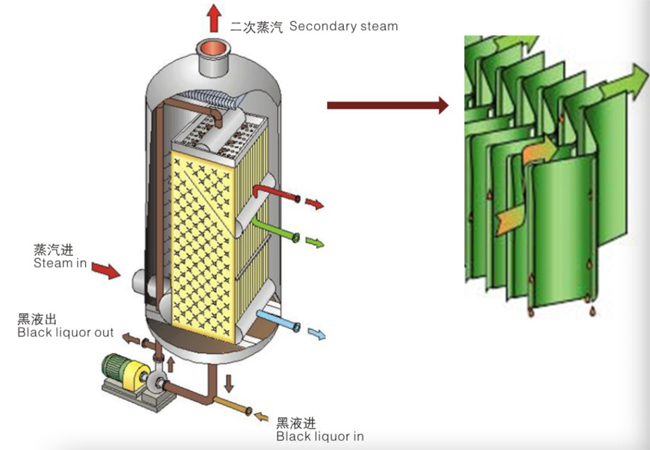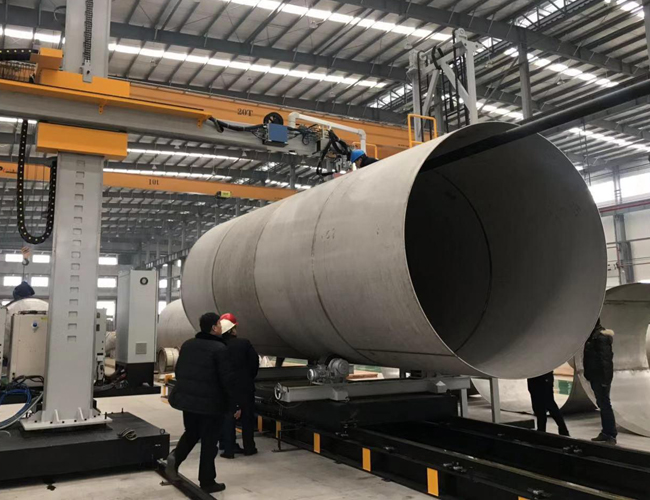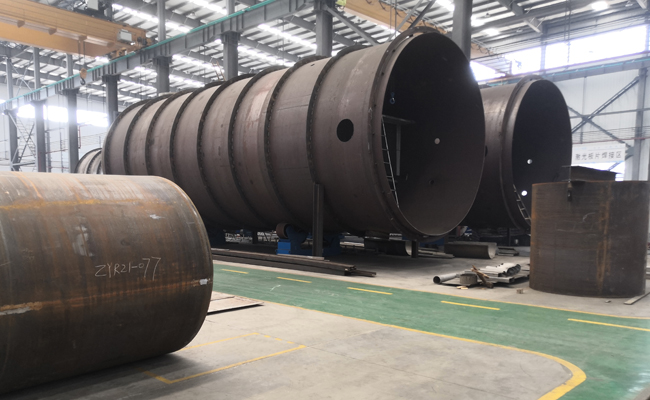Jiangsu Hanpu Mechanical Technology Co., Ltd |
|
Verified Suppliers
|
|
Laser welded Pillow heat exchaner plates used in Mechanical Vapor Recompression system
MVR Technical Principles
Mechanical Vapor Recompression (MVR) is a proven energy-saving evaporative concentration technology, which reduces evaporation energy use by 90% or more.
MVR uses energy recovered from the condensate to create a pure liquid distillate and a concentrated product/waste.
From Boyle’s law it is known for a gas that PV/T (Pressure * Volume / Temperature) is constant (PV/T=K). During compression of vapor, the pressure and temperature increase. From this, the heat energy can be reused.
The energy normally lost in the compression is recovered, leading to a highly-efficient evaporation process.
Since this compression is realized by a simple mechanical compressor, the process is called MVR.
Mechanical Vapor Recompression (MVR) evaporator
Mechanical vapor Recompression reduces the energy used in the evaporation process by up to 90% compared with conventional systems.
It works by reusing the heat energy contained in the vapor.This energy would otherwise be wasted.In a typical falling film evaporation plant the feed liquid enters the top of a vertical chamber called a Calandria.The liquid is dispersed across a large number of vertical tubes as it flows downwards it tends to form a film on the inside of the tube.Between the top and the bottom sections of the Calandria there is a sealed are where the tubes pass through a jacket of high temperature vapor.This section acts as a heating exchanger. As the hot vapor condenses on the outside of the tubes,it releases latent heat which raises the temperature of the feed liquid in the tubes.By the time the feed liquid leaves the bottom of the tube,much of the water has been evaporated off leaving a concentrated viscous liquid.The water which has been evaporated off leaves the tube as vapor.In the bottom section of the Calandria,some of the concentrated liquid gathers and can be drawn off,the hot mixture passes into a cooler chamber called the Separator where more of the concentrated liquid falls to the bottom to be drawn off and the vapor rises to the top.This vapor now contains most of the energy that was initially fed into the system.
The turbo fan sucks the vapor from the Separator and re-compresses it,raising the pressure and so increasing the temperature to the point where the vapor can once again be used as a source of heat.The unit is extremely robust,gas tight turbo fan ideally suited to the pressure,temperatures and volumes of the MVC evaporation process.At its heart is an ultra high speed impeller with a tip velocity of over 1000 Km/h faster than the speed of a jet airliner.The rotor probably has the highest tip velocity of any welded impeller ever manufactured.The re-heated vapor can then be fed back into the Calandria to provide the heat energy required to evaporate more feed liquid as it passes down the tubes.The Mechanical Vapor Compression process is a high energy efficient and cost effective way of retaining and reusing the latent heat contained in the vapor.Energy that would otherwise be wasted.Once the process has been started and brought up th temperature the only energy input required is the electricity to drive the Turbo fan.
As energy costs increase, the use of Mechanical Vapor Recompression (MVR) evaporators has also increased. The energy savings possible by using MVR technology is significant. MVR evaporators are designed to operate with very low specific energy consumption while producing clean condensate to minimize fresh water consumption in the mill.
| Name | Pillow plate series | Shell and tube heat exchanger | Detachable plate heat exchanger | Spiral plate heat exchanger |
| Operating temperature range | <800℃ | <800℃ | <170℃ | <350℃ |
| Maximum pressure | <60 bar | <200 bar | <32 bar | <25 bar |
| Heat transfer coefficient to water[W/m2·℃] | 3500 | 2700 | 5600 | 2000 |
| Application of air and water heat exchange | fit | fit | not fit | Partial fit |
| Immersion in tank or water | fit | Partial fit | not fit | not fit |
| Welding of tank and reactor | Applicable | not applicable | not applicable | not applicable |
| Install into the existing reactor and other equipment | Flexible application | Partial applicable | not applicable | not applicable |
| All welded construction | Applicable | Applicable | not applicable | not applicable |
| Heavily contaminated liquids and other applications | Applicable | Applicable | Partial Applicable | Applicable |
| Weight per unit area | low | high | low | high |
| Falling film, condenser and evaporator | fit | fit | Partial fit | Partial fit |
Working principle

Production Capacity


Certificate
